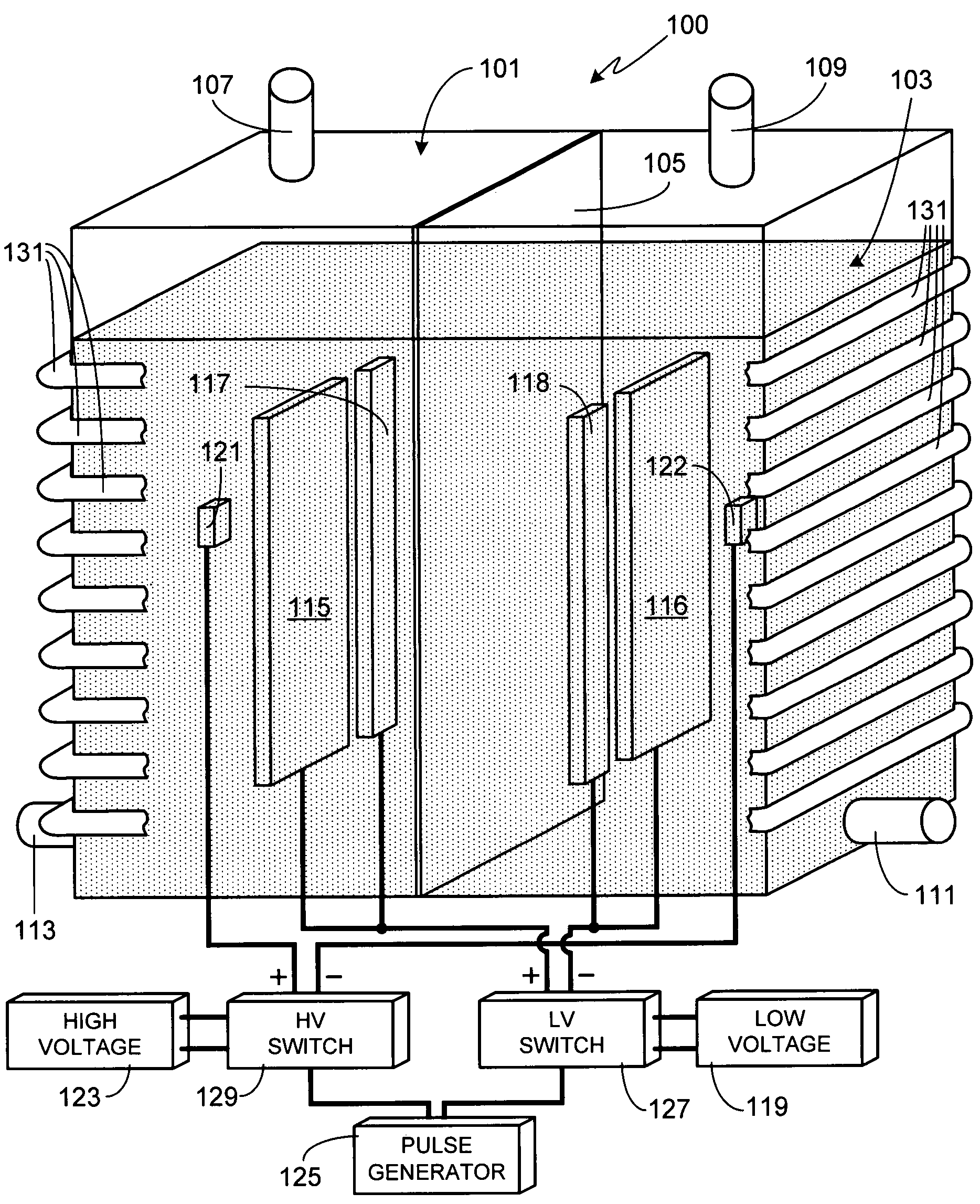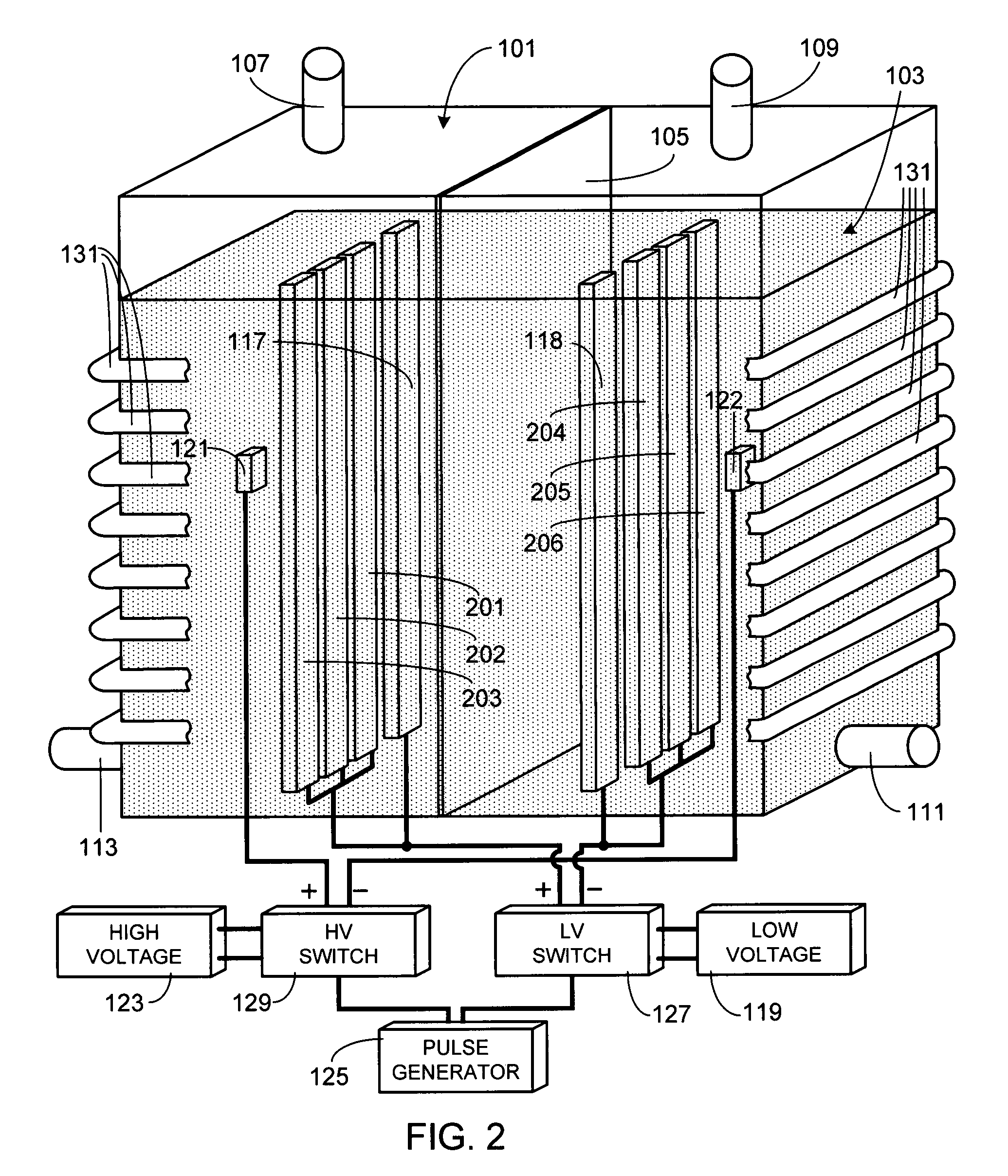Method of using an electrolysis apparatus with a pulsed, dual voltage, multi-composition electrode assembly
a technology of electrolysis apparatus and electrode assembly, applied in the field of electrolysis system, can solve the problems of limited regional availability, dire consequences for the world's economy, and the vulnerability of the world's energy supply to disruption, and achieve the effect of high hydrogen output flow ra
- Summary
- Abstract
- Description
- Claims
- Application Information
AI Technical Summary
Benefits of technology
Problems solved by technology
Method used
Image
Examples
Embodiment Construction
[0027]FIG. 1 is an illustration of an exemplary, and preferred, embodiment of the invention which is used to produce large quantities of hydrogen. Electrolysis system 100 includes a tank 101 comprised of a non-conductive material, the size of the tank depending primarily upon the desired output level for the system, for example the desired quantity / flow rate of hydrogen to be generated. Although tank 101 is shown as having a rectangular shape, it will be appreciated that the invention is not so limited and that tank 101 can utilize other shapes, for example cylindrical, square, irregularly-shaped, etc. Tank 101 is substantially filled with water 103. Within water 103 is an electrolyte, the electrolyte necessary to achieve the desired level of conductivity within the water. A preferred electrolyte is potassium hydroxide, although the invention is not limited to this specific electrolyte. For example, sodium hydroxide can also be used. Although a typical electrolysis system used to de...
PUM
| Property | Measurement | Unit |
|---|---|---|
| voltage | aaaaa | aaaaa |
| voltage | aaaaa | aaaaa |
| voltage | aaaaa | aaaaa |
Abstract
Description
Claims
Application Information
 Login to View More
Login to View More - R&D
- Intellectual Property
- Life Sciences
- Materials
- Tech Scout
- Unparalleled Data Quality
- Higher Quality Content
- 60% Fewer Hallucinations
Browse by: Latest US Patents, China's latest patents, Technical Efficacy Thesaurus, Application Domain, Technology Topic, Popular Technical Reports.
© 2025 PatSnap. All rights reserved.Legal|Privacy policy|Modern Slavery Act Transparency Statement|Sitemap|About US| Contact US: help@patsnap.com



